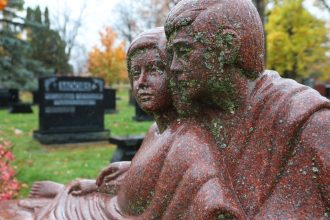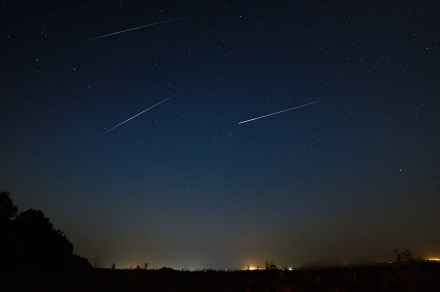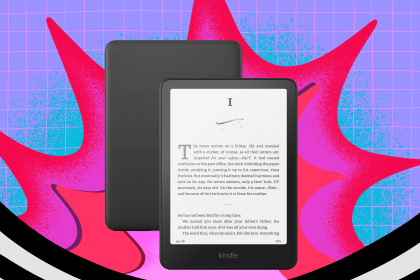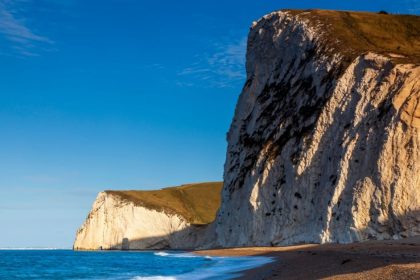NASA
The next week will be a fun one for skywatchers, as the Lyrid meteor shower will be visible over the weekend and peak on Monday night. If you’re hoping to catch sight of this charming cosmic event, then Robert Massey, Deputy Executive Director of the Royal Astronomical Society, has shared tips on how to get the best view from wherever you live.
The Lyrids will be visible from 17 to 26 April, and will peak on the evening of 21 to 22 April. You won’t see long, bright streaks like you do with other meteor showers, but you might see brief flashes called fireballs.
“With the Lyrids, you’ll be looking for a little flurry of short-lived streaks of light – what you might popularly call ‘shooting stars’,” Massey said in a video explainer. “With this particular shower you could expect to see maybe 10 to 15 an hour at the peak, so it’s not massively prolific… but if you’ve got a clear sky it’s still very much worth it.”
A meteor shower happens when the Earth passes through a cloud of debris in its orbit, leftover from comets or asteroids. In the case of the Lyrids, the debris comes from the tail of Comet Thatcher, which takes more than 400 years to complete an orbit around the sun and hasn’t come close since 1861. But the debris it left behind is still present, and Earth passes through it once per year, with pieces burning up in the atmosphere to create the shooting stars.
If you want to try and see the meteor shower, there should be a good view throughout the northern hemisphere as the moon won’t rise until late in the night — as long as there aren’t clouds in the way.
“The good thing about a meteor shower – and the Lyrids are no exception – is that you don’t need any special equipment,” Massey said. “The best equipment is just your eyes, looking up at the sky. Now in this particularly case, the radiant – the point of the sky they appear to come from – is in the constellation of Lyra, near the bright star Vega, part of the Summer Triangle.
“So if you’re looking in the small hours of the morning – which is the best time to look – then if you’ve got a clear sky just look up. The radiant will be slightly over towards the east, but it’s not absolutely critical which direction you’re looking.”
If you’re hoping for the best view, you’ll need to be patient and give your eyes time to adjust to the darkness. So set yourself up somewhere comfortable like a deck chair, get a good view of the sky, and avoiding looking at bright objects like your phone to give you the best night vision.
Georgina has been the space writer at Digital Trends space writer for six years, covering human space exploration, planetary…
How to see the stunning Perseid meteor shower this weekend
This weekend will see the peak of one of the most spectacular meteor showers of the year: the Perseids. The shower occurs around this time each year as Earth passes through a cloud of debris left in its orbit by a comet called Swift-Tuttle. The comet orbits the sun just once every 133 years, but over its time it has left a “river of rubble” across Earth’s orbit. When the planet passes through this river, the tiny pieces of debris burn up in the atmosphere and create a stunning lightshow in the sky.
The Perseids are generally one of the best meteor showers for sky-watchers, but this year the timing is particularly good due to the phase of the moon. As the moon is a source of bright light in the sky, when it is full it can create glare that makes meteors harder to see. This weekend the moon is only in its first quarter, and will affect viewing before midnight. “But as the Moon sets before midnight local time, the rest of the night is primed for perfect viewing circumstances,” said Diana Hannikainen, observing editor at Sky & Telescope.
Read more
Head out tonight for the chance to see one of three meteor showers
It’s an exciting time to be a sky-watcher this week, as no less than three meteor showers are occurring. If you’re in an area with clear skies and you’re far from city lights, head out after dark for the chance to view one of these beautiful events.
Meteor showers occur regularly, as Earth passes through clouds of debris in its orbit. As it passes through these debris clouds, small pieces of the debris burn up in the planet’s atmosphere and are visible as the streaks of light we call meteor showers.
Read more
How to watch the Quadrantid meteor shower hit its peak tonight
Tonight will see the peak of the Quadrantid meteor shower, one of the lesser-known meteor showers of the year. It won’t be as big or bright as some of the more famous showers like the Geminids or the Leonids, but it’s still a great excuse to head out and do some stargazing to celebrate the new year.
If you’d like to check out this event, we have advice on how to watch the shower in person — or a livestream option for those who fancy seeing the sights without venturing out into the cold.
What is the Quadrantid meteor shower?
An image from the Quadrantid meteor shower. NASA
Read more












